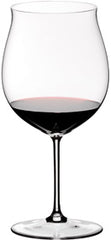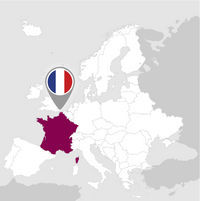奖项
详情

香水

味道
服务于:
18 - 20 °C.
长寿:
15 - 25 years
醒酒时间:
1 hour

搭配
- 创办年份: 1777
- 酿酒师: Nicolas Thienpont
- 公顷: 11
Terroirs are the expression of a place, a witness to history. Infinitely rich and varied, their complexity is expressed through their biological, geological, topographical and climatic characteristics.
Precious and fragile, they are the greatest thing that nature offers us and they cannot be imitated. Their quality is an irreplaceable ingredient in the production of great wines.
To produce great wines in the image of a terroir: the idea is simple but the practice requires patience and humility.
Nicolas Thienpont attributes his success to a respect for the traditions inherited from the past and an envy to innovate. 阅读更多


| 名称 | Chateau Larcis Ducasse Saint Emilion Grand Cru 2017 |
|---|---|
| 类型 | Red still |
| 葡萄酒名称 | Saint-Emilion AOC |
| 年份 | 2017 |
| 容量 | 0,75 l |
| 酒精度 | 14.5% 按体积 |
| 葡萄品种 | 92% Merlot, 8% Cabernet Franc |
| 国家 | France |
| 产地 | Bordeaux |
| 供应商 | Chateau Larcis Ducasse |
| 产地 | Saint Emilion - Bordeaux |
| 土壤成分 | Sand-clay and clay-limestone. |
| 栽培系统 | Every year, there are numerous manual interventions in the vineyard with pruning, de-budding and green harvesting to space out and regularise the production, while leaf-thinning and the removal of lateral buds protect and stabilise the immediate environment of the grapes. Treatments against disease are carefully managed with special regard to the natural balance of the vineyard. |
| 每公顷产量 | 27-34 hl/ha |
| 酿酒工艺 | Using wild yeasts, the alcoholic fermentation starts naturally after between twenty-four and seventy-two hours and the juice of the grapes will ferment over the course of nine to fifteen days. The cap of pomace which forms on the wine will be left to macerate for between three and four weeks during which time pump-overs allow us to gently extract colour, aroma and tannins. |
| 陈酿 | After this maceration, the wine is run-off into barrels, of which 60% are new. The malolactic fermentation takes place in its own time between November and March. If necessary, we undertake lees-stirring to add richness and fat to the wine.The first racking of the wine takes place after six to nine months, before the summer. After two winters, and eighteen months on its lees, the wine is stabilised and ready to be bottled. |









